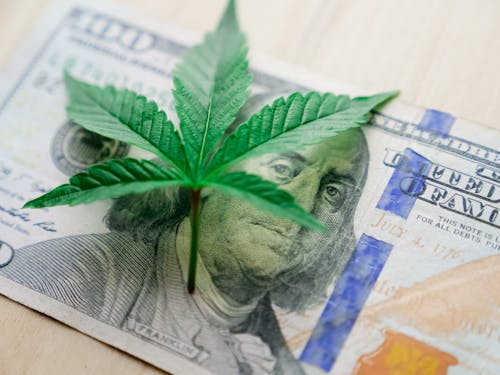Marijuana Legalization vs. Marijuana Freedom

by Laurence M. Vance via The Future of Freedom Foundation
There is a difference between marijuana legalization and marijuana freedom.
Since 1996, 36 states have legalized the medical use of marijuana. Since 2012, 18 states have legalized the recreational use of marijuana. In addition, 27 states have decriminalized the possession of small amounts of marijuana. The District of Columbia has done all three.
The medical use of marijuana is legal in the U.S. territories of the District of Columbia, the Northern Mariana Islands, Guam, Puerto Rico, and the Virgin Islands. The recreational use of marijuana is legal in the territories of the District of Columbia, the Northern Mariana Islands, and Guam. Marijuana is completely illegal in just five states (Idaho, Kansas, South Carolina, Tennessee, and Wyoming).
But since the federal government in the Controlled Substances Act (CSA) classifies marijuana as a Schedule I controlled substance with “a high potential for abuse,” “no currently accepted medical use in treatment in the United States,” and “a lack of accepted safety for use of the drug under medical supervision,” the possession of even a small amount of marijuana can result in fines and imprisonment.
The federal Drug Enforcement Administration (DEA) regularly seizes and destroys cannabis plants. The Domestic Cannabis Eradication/Suppression Program (DCE/SP) “targets Drug Trafficking Organizations (DTO) involved in cannabis cultivation.” In 2020,
the DCE/SP was responsible for the eradication of 3,711,040 cultivated outdoor cannabis plants and 830,922 indoor plants for a total of 4,541,962 marijuana plants. In addition, the DCE/SP accounted for 4,992 arrests and the seizure in excess of 41.0 million dollars of cultivator assets. The program also removed 3,193 weapons from cannabis cultivators.
This is to be expected from the federal government. But why would state law enforcement agencies do likewise?
In 1996, California became the first state to legalize medical marijuana. The recreational use of marijuana was legalized in 2014, but in July of 2021,
Los Angeles County authorities seized $1 billion worth of marijuana and arrested 131 individuals as part of a multi-agency operation that involved more than 400 law enforcement personnel.
Police confiscated 33,480 pounds of marijuana worth $1.19 billion, 65 vehicles, 33 firearms and $28,000 in cash.
Detectives with the LASD Narcotics Bureau identified more than 500 illegal marijuana farms during reconnaissance flights conducted earlier this year.
Oregon legalized medical marijuana in 1998 and recreational marijuana in 2014. But just last month,
Oregon State Police officers seized $500 million in marijuana Thursday during a single drug bust in Jackson County, Oregon.
Police executed a search warrant Thursday at a location that included five warehouses full of marijuana.
During the operation, which spanned over two days, an epic amount of illegal, processed marijuana and a firearm were seized.
Approximately 500,000 pounds of marijuana were found over the two-day investigation.
This investigation and subsequent seizure of dried, processed Marijuana is one of the largest in Oregon State Police history and highlights the enormity of the critical issue in Southern Oregon.
So even if the Democratic Marijuana Opportunity Reinvestment and Expungement (MORE) Act or the Republican States Reform Act were passed by Congress and signed into law by President Biden—either of which would remove cannabis from the CSA and regulated marijuana like alcohol—we would still not have marijuana freedom. The 50 states, including the ones that have legalized both the medical and recreational use of marijuana, are still waging war on marijuana.
Why?
Fair use excerpt. Read the whole article here.